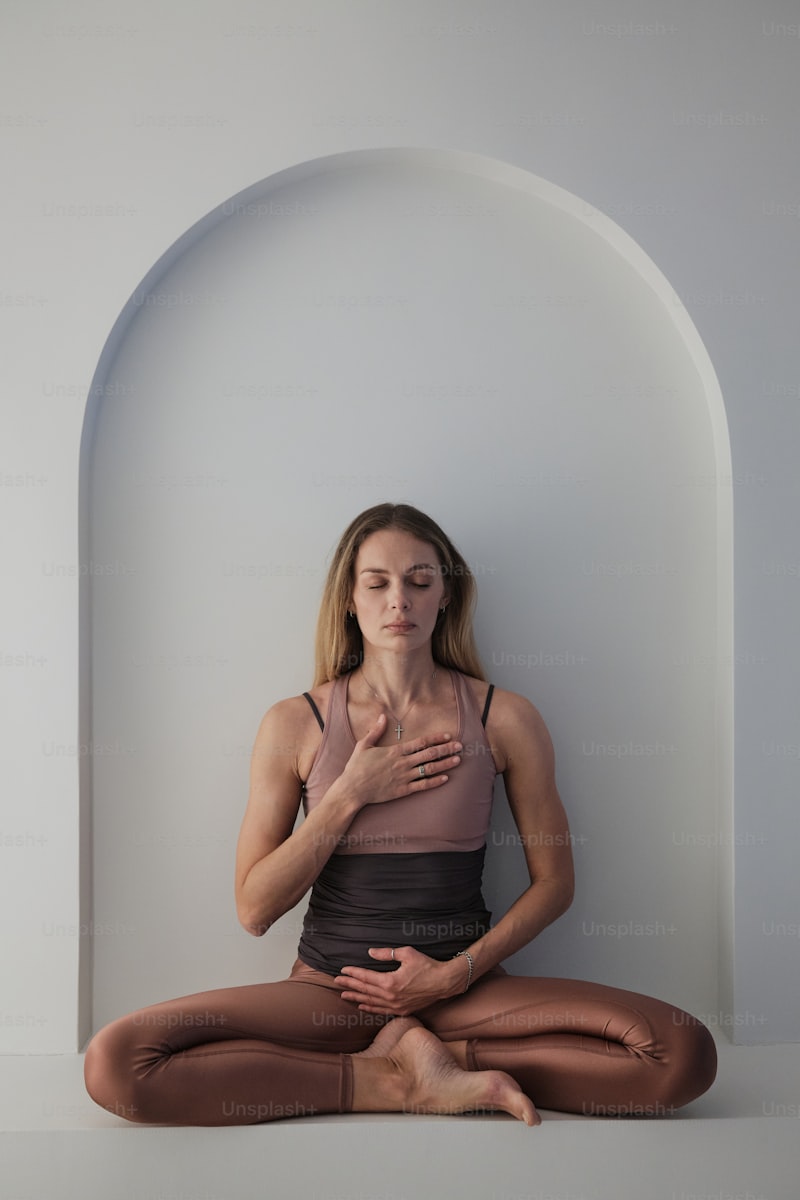Feeling emotionally balanced is like finding your center in the chaos of life—a harmony that many seek but struggle to attain. Fortunately, yoga offers a pathway to this equilibrium, intertwining physical postures, breathwork, and mindfulness practices to nurture emotional well-being.
One of the most powerful tools within yoga for enhancing emotional balance is its focus on the breath. Through pranayama, or breath control techniques, practitioners learn to regulate their breathing patterns. This not only calms the mind but also stabilizes the emotions. Imagine each deep inhalation and exhalation as a gentle wave, soothing the turbulence within.
Asanas, or yoga poses, are another cornerstone. These physical postures not only strengthen the body but also release tension stored in muscles, which can often be a physical manifestation of emotional stress. The practice encourages you to tune into your body, listening to its needs and honoring its limits, fostering a deeper connection between body and mind.
Mindfulness, cultivated through meditation and awareness practices, plays a pivotal role in emotional balance. By staying present in the moment without judgment, you develop resilience against the ups and downs of life. It’s like being the calm eye of the storm, where external chaos may swirl but does not disturb your inner peace.
Yoga invites you to explore your inner landscape, gently nudging you towards self-discovery and acceptance. It’s not about perfection but about progress—a journey where each breath, each pose, each moment of mindfulness contributes to your emotional well-being. Whether you’re seeking serenity in a hectic world or aiming to manage stress more effectively, yoga offers a holistic approach to achieving and maintaining emotional balance.
Ready to embark on this transformative journey? Roll out your mat, take a deep breath, and let yoga guide you towards a more balanced emotional state.
Unlocking Serenity: Mastering Yoga Poses for Emotional Equilibrium
Yoga, an ancient practice originating from India, offers a holistic approach to wellness. It combines physical postures, breathing exercises, and meditation to harmonize the body and mind. One of the key benefits of yoga is its ability to regulate emotions by calming the nervous system and reducing stress hormones. Imagine feeling serene amidst life’s chaos – that’s the power of yoga.
The Warrior Pose, or Virabhadrasana, exemplifies strength and determination. By holding this pose, you channel inner resilience and courage. It not only strengthens your legs and core but also instills a sense of groundedness and stability in your emotions. As you hold the pose, feel the tension melt away, leaving you with a profound sense of calm.
For those seeking to release pent-up emotions, the Bridge Pose, or Setu Bandhasana, can work wonders. As you lift your hips towards the sky, you open your heart and release any stored tension. This pose stimulates the thyroid gland, which regulates metabolism and energy levels, promoting a sense of vitality and emotional balance.
Balance poses like the Tree Pose, or Vrikshasana, teach us about stability and focus. As you stand tall on one leg, with the other foot pressed against your inner thigh, you embody grace and poise. This pose not only improves concentration but also connects you to your inner self, fostering emotional stability and mindfulness.
Incorporating yoga into your daily routine can transform how you respond to life’s challenges. Whether you’re feeling overwhelmed, anxious, or simply seeking tranquility, mastering yoga poses for emotional equilibrium offers a natural and empowering solution. Embrace the practice, and discover a deeper connection between your body and mind. Unlock the serenity that lies within you through the transformative power of yoga.
The Science Behind Yoga: How Asanas Influence Emotional Stability
Yoga isn’t just about bending and stretching; it’s a science that harmonizes mind, body, and spirit. At the heart of this ancient practice lie asanas, or yoga postures, each designed to cultivate specific emotional and physical benefits. These poses aren’t mere stretches; they’re powerful tools that can transform your mood and emotional well-being.
Imagine starting your day feeling anxious or stressed. By practicing certain yoga asanas, you can actively reduce those overwhelming feelings. Poses like the Child’s Pose (Balasana) or the Corpse Pose (Shavasana) promote deep relaxation, calming your mind and allowing you to let go of tension. They act like a reset button for your emotions, gently guiding you towards a state of inner peace.
On the flip side, if you need an energy boost or seek to uplift your spirits, there are dynamic asanas like the Warrior Poses (Virabhadrasana series) or the Bridge Pose (Setu Bandhasana). These poses activate your body’s energy centers, known as chakras, fostering a sense of empowerment and vitality. They’re like espresso shots for your emotional resilience, invigorating you to face the day with renewed vigor.
The secret lies in the mind-body connection that yoga nurtures. As you move through these asanas, you’re not just stretching muscles; you’re also releasing emotional blockages. Tight hips may signify holding onto stress, while a tense jaw could reflect unresolved emotions. Yoga encourages you to observe these physical manifestations and then work through them using specific poses tailored to release stored tension.
Moreover, yoga promotes mindfulness, the practice of being present in the moment without judgment. This mindfulness cultivated through asana practice enhances emotional stability by teaching you to acknowledge and manage your feelings effectively. It’s like having an emotional toolkit at your disposal, ready to help you navigate life’s ups and downs with grace and resilience.
Mindful Breathing Techniques: Yoga’s Secret to Emotional Resilience
Imagine this: in the hustle and bustle of everyday life, stress seems to creep in from all corners. Deadlines at work, personal commitments, and the endless stream of notifications on our devices can leave us feeling overwhelmed and emotionally drained. This is where yoga’s mindful breathing steps in as a silent hero, offering a path to regain balance and inner strength.
Mindful breathing, at its core, is about bringing awareness to each breath we take. It’s not just about inhaling and exhaling; it’s a deliberate act of tuning into the present moment. When we practice mindful breathing, we draw our focus away from the chaos of the external world and gently guide it inward, where peace and resilience reside.
Through simple yet profound techniques, yoga teaches us to regulate our breath in ways that soothe the mind and nourish the soul. One such technique involves diaphragmatic breathing, where we engage the diaphragm fully to promote deep, calming breaths. This technique alone can shift our nervous system from a state of fight-or-flight to one of calm and restfulness.
Another gem in yoga’s treasury of mindful breathing techniques is alternate nostril breathing. This practice involves alternating between breathing through the left and right nostrils, which helps balance the energy channels in the body. It’s like hitting a reset button for our emotions, bringing a sense of harmony and clarity.
Moreover, yoga encourages us to embrace the power of the breath in movement through practices like Vinyasa flow. As we synchronize breath with movement, we cultivate a moving meditation that not only enhances physical flexibility but also strengthens our emotional resilience. Each posture becomes a metaphorical journey inward, where we confront challenges with grace and ease.
From Stress to Stillness: Yoga Practices for Emotional Harmony
At its core, yoga is more than just physical postures; it’s a holistic approach that integrates breath, movement, and mindfulness. When we practice yoga, we engage not only our muscles but also our breath, creating a union that brings us into the present moment. This mindful awareness is where the magic happens – where stress begins to dissolve, and stillness emerges.

One of the most beautiful aspects of yoga is its adaptability to individual needs. Whether you’re a beginner or seasoned practitioner, there are practices suited to every stage of your journey. For those navigating stressful emotions, gentle yoga sequences paired with deep breathing can be incredibly soothing. These practices help to regulate the nervous system, promoting a sense of calm and relaxation.
As we flow through yoga poses, we stretch and strengthen our bodies while also releasing emotional tension stored within. It’s like wringing out a sponge – letting go of what no longer serves us and creating space for inner peace to flourish. Each pose is an opportunity to connect with ourselves on a deeper level, fostering self-awareness and acceptance.
Beyond the physical benefits, yoga encourages us to observe our thoughts without judgment. This mindfulness practice allows us to step back from our busy minds and observe the ebb and flow of emotions with compassion. Through regular practice, we develop resilience – the ability to navigate life’s challenges with grace and equanimity.
In essence, yoga is a journey inward – a journey from stress to stillness, where emotional harmony awaits. By integrating yoga into our lives, we cultivate not only physical strength but also mental clarity and emotional balance. So, are you ready to embark on this transformative journey? Discover the power of yoga and experience the profound shift from stress to stillness within.
Yoga and Meditation: Tools for Nurturing Emotional Balance
When we talk about emotional balance, we’re referring to the ability to manage our emotions effectively, to respond rather than react to life’s challenges. Yoga and meditation offer a profound way to achieve this. Through the practice of yoga, which combines physical postures (asanas), breathing exercises (pranayama), and meditation techniques, you embark on a journey of self-discovery and inner peace.
Imagine yoga as your personal retreat, where each stretch and pose not only strengthens your body but also eases tension from your mind. As you flow through different asanas, you become more attuned to your body’s signals, releasing stored emotions and creating space for positivity.

Meditation, on the other hand, is like a mental gym session. It’s where you train your mind to focus and redirect your thoughts. Just as you build physical muscles through exercise, meditation strengthens your ability to concentrate and find stillness amidst the noise. With consistent practice, you’ll notice how your reactions to stressful situations become more measured, more thoughtful.
Together, yoga and meditation form a dynamic duo for emotional well-being. They teach us to breathe through discomfort, to observe our thoughts without judgment, and to cultivate a sense of gratitude and acceptance. It’s not about achieving perfection on the mat or in meditation, but rather about embracing the journey of self-improvement and resilience.
In today’s fast-paced world, where stress and anxiety often seem like constants, these ancient practices offer a timeless remedy. They remind us that emotional balance isn’t about suppressing emotions but rather understanding and navigating them with grace. So, whether you’re rolling out your yoga mat or finding a quiet corner to meditate, you’re investing in your emotional health and nurturing a sense of inner harmony that resonates far beyond the moments you spend in practice.
Embrace Inner Peace: Yoga’s Role in Managing Emotional Turbulence
Yoga isn’t just about twisting your body into impressive poses (though those are impressive!); it’s a profound journey inward, a blend of movement, breath, and mindfulness that speaks directly to our emotional core. When life throws its curveballs, yoga offers a steady anchor. It’s like having a reliable friend who listens without judgment, gently guiding you back to yourself.
Imagine standing on a rocky shore, waves crashing around you. Yoga is your sturdy lighthouse, casting a steady beam amidst the chaos. Through its asanas (poses) and pranayama (breathing techniques), yoga teaches us to embrace discomfort without being consumed by it. It’s about acknowledging our feelings—the good, the bad, and the messy—and learning to respond rather than react.
One of yoga’s superpowers lies in its ability to soothe the nervous system. When stress triggers our fight-or-flight response, yoga flips the switch, activating the rest-and-digest mode. This isn’t just theory; science backs it up. Practicing yoga regularly can lower cortisol levels, reduce anxiety, and even improve sleep quality. It’s self-care in motion, a way to nurture your mind as you would your body.
But yoga isn’t a quick fix or a one-size-fits-all solution. It’s a personal journey, a gradual unfolding of self-awareness and acceptance. Each time you step onto your mat, you’re rewriting the script of how you relate to yourself and the world. It’s about finding peace in the process, not just the destination.
So, whether you’re grappling with daily stressors or navigating deeper emotional waters, consider embracing yoga as a companion on your journey. It’s more than a physical practice; it’s a mindset, a way of life that invites you to explore the depths of your being. Are you ready to dive in and discover how yoga can help you ride the waves of emotional turbulence?
Frequently Asked Questions
What are the Best Yoga Poses for Emotional Balance
Discover effective yoga poses that promote emotional balance. Learn how to cultivate inner calm and stability through a selection of poses designed to reduce stress and enhance emotional well-being.
Can Yoga Help Reduce Stress and Anxiety
Discover how yoga can effectively reduce stress and anxiety through a variety of techniques such as controlled breathing, mindfulness, and gentle physical exercises. Learn about the proven benefits and practical tips to integrate yoga into your daily routine for better stress management.
How Often Should I Practice Yoga to Improve Emotional Stability
Discover the optimal frequency for practicing yoga to enhance emotional stability. Learn how consistent practice can effectively support your emotional well-being.
How Does Meditation Complement Yoga for Emotional Balance
Learn how meditation enhances yoga by fostering emotional balance. Discover how these practices work synergistically to cultivate mindfulness and inner harmony.
Are There Specific Breathing Techniques in Yoga for Emotional Wellness
Discover effective breathing techniques in yoga tailored for emotional wellness. Learn how controlled breathwork can calm the mind, reduce stress, and enhance emotional balance.


